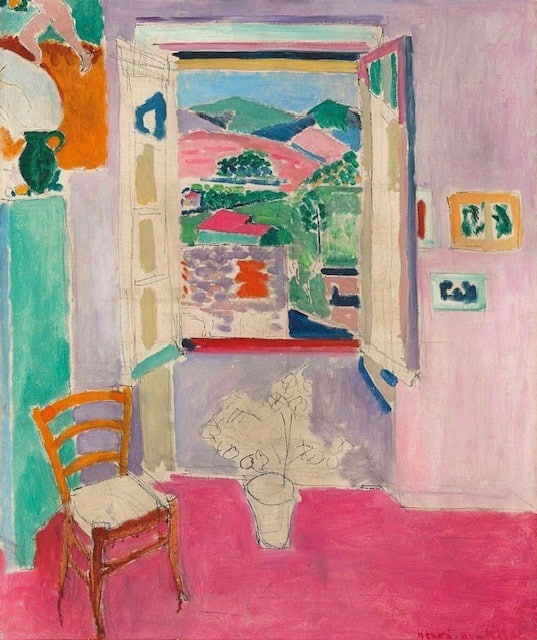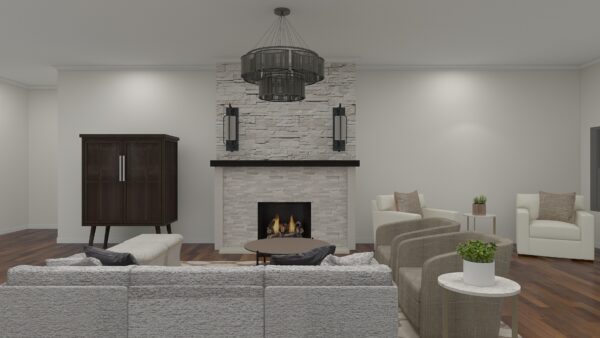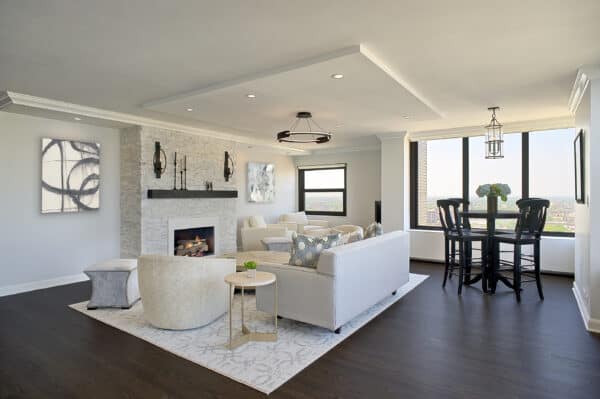
Henri Matisse
HaPpY NeW YeAr!! I have a great feeling about 2024 and I want to share and spread the positive energy your way~
Let’s kick off by discussing AI: I don’t know how familiar you are with AI (Artificial Intelligence) but I’ve been researching the process of using AI (for inspirational design concepts) and there is more merit to it than I had thought. At first, I admit that I was skeptical but I now believe that it does have the capabilities to aid in creating a nice interior among other things. For text and imaging-generating tools, the two most recognized ones are ChatGPT and Midjourney. Let’s expand on this topic and understand the basic concept of what AI is and can do. Quoted in an article by the sustainable company Econyl: [1]
AI, merging Machine Learning with natural language processing, has accelerated capabilities far beyond human speed – certain AI devices can now perform as many calculations in a single second as an individual could in 31,688,765,000 years” The article also mentions that AI-driven solutions dramatically improve the capabilities of sorting and recycling. (This I love!) Lastly, and in the realm of fashion and interior design, the article also includes the following:
Sustainable Supply Chain Innovations:
AI’s influence extends to the heart of supply chain management. In the fashion industry, Stella McCartney stands out for sustainably leveraging AI. Using Google’s Cloud technology, the brand has gained deeper insights into its supply chain for essential materials like cotton and viscose. This AI-enhanced approach has led to better inventory management and a substantial reduction in overproduction, culminating in a more sustainable and efficient supply chain model. We also use these fibers in our design materials.
AI can also help create content for blog posts such as this one but I do very much enjoy journalism and design blogging using my own creative thought process as much as I do designing interiors.
The downside With AI, there are current flaws as with anything new. With the speed of improved technology, by the time you read this, it very well likely may have changed and improved. Let’s look at the not so positives: AI is not good with spatial concepts, for example. It may locate a sink faucet above a cabinet or place a full area rug underneath a kitchen island. Additionally, it may add a door instead of a window to a design. It also does not show customers real, shoppable furniture, and making precise changes such as a command to move a chair over 6 inches is impossible without manually drawing it in. It also can’t tell a contractor to show up early to a project.
To keep this blog post contained to the realm of Interior Design, I won’t elaborate any further on the many capabilities of AI.
With that being said, I feel that it is so important to hire an Interior Designer such as myself- one that is experiential, knowledgable, and hands-on. My team and I solve problems when they arise, make edits and changes, reselect unavailable products after selection, pivot when you, a client request changes, bring you fabrics, carpets, and textures to feel, add in the mix scented candles for you to test out. We make you laugh, have fun, and ENJOY THE EXPERIENCE AND PROCESS! After 37 years in business, we have fine-tuned our process and create an experience like no other. For this, we also do not engage in e-design. E-design is a remote service that some designers offer as a service for some clients and other designers remotely from their desks. There is often a lack of interaction, in-person eye contact, or physical measurements taken to confirm specifics.
The two photos below depict design scenes that were AI-generated.

AI-generated image posted on Instagram by sunt_mrr

AI-generated image posted on Instagram by sunt_mrr
The photos look surreal, and, although beautiful and very calming, let’s get back into designing in the real world.
The majority of our clients are stylish and have good taste. They know what they like (and what they don’t like) but need a professional designer to coordinate it all and filter out the plethora of products and options. When we are working on a project, we orchestrate it like a visual symphony, or like a chef in a kitchen adding all of the ingredients together to make an overall presentation. It’s an art and a science. We make hundreds, sometimes thousands of decisions and have learned to pivot if a product is not available. We navigate our thousands of trusted trade partners to reselect that unavailable product. We know how to source products and services.
I recently read a tweet that stated: “AI does not have feelings…yet!” How true this is. The comfort and ease of having a real-life designer sit and listen, and comprehend your thoughts including the little nuances, is worth its weight in gold. An experiential designer will let you enjoy the time spent together in your design process.
We will oftentimes hold your hand and tell you not to fear, we introduce you to new textures, technology, and conveniences such as a five-in-one refrigerator by GE/Monogram. You tell us how often you entertain, what you like to drink and we plan for a beverage fridge, a coffee or tea bar, etc. We ask questions such as Do you like to work out at home? Do you practice meditation or yoga? What hobbies do you have that require special task lighting? Are you an art collector? Which wall should we plan for special MR16 lighting? We listen to your needs and we take action based on your preferences!
Our Interior Design Process:
To simplify the description of our process:
1. We begin with a meeting and questionnaire to get into your mindset of how you would like your new space to function as well as look fabulous. We ask many questions, depending on the project, such as allergies, do you prefer symmetrical or asymmetrical layouts, cooking requirements if designing a kitchen, bathtub or shower when designing a bathroom, and much more. We consider this “a client intake”.
2. We start brainstorming as to the flow of the space, the architectural details that may already be in the space or need to be added to a room or space.
3. We start creating “mood boards” showing each product with clickable links to their manufacturers’ websites and then have renderings drawn up, as shown. 
There were many edits until the design and layout were fine-tuned to perfection. Our team did field site visits often and kept the workers on track. Here is a result photo:

Architectural Photography by Norman Sizemore & Mary Beth Price
There are many, many other steps in fine-tuning a space to your satisfaction but please know that there are hours of schlepping, cleaning, inspecting, searching and more searching for the perfect items for each space. We are meticulous about details and make sure each space that we design is functional!
In summary: AI can help brainstorm a design concept to generate images and fun to play around creating fantasy interiors. We must always be mindful of the functionality as well as the feelings that a space will evoke for people entering it. Without feelings and sensory information input, a design concept may not have the full meaning or impact. Let us work together to elevate your interior to the next level!
Until my next blog post,
Stay safe and well~
~Stephanie
Sources: [1] Econyl article “Can AI Be the Key to Sustainable Progress” January 2024
